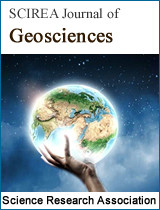Highlights on Extreme Meteorological Events in Sicily
DOI: 350 Downloads 8948 Views
Author(s)
Abstract
The aim of this paper is to analyze the reasons for which the rainfall accumulations in Sicily do not follow the downward trend observed in the period from 1921 to 2002, but, mostly in the last ten years, show a substantial increase. The analysis has been performed by applying statistical methods to a wide ensemble of collected meteorological data. The observed increase of rainfall rates has been connected both to the “global warming”(according to the National Oceanic and Atmospheric Administration, the year 2015 promises globally the warmest from the beginning of the records) and to the positive thermal anomalies of Mediterranean sea which give rise to a frequency and intensity rise of severe meteorological events. From the present study it clearly emerges that, in order to forecast such severe events with sufficient advance, it is important to classify such phenomena as well as to monitor the contest environmental conditions that generate them.
Keywords
extreme meteorological events, extreme weather, rainfall, Sicily
Cite this paper
M.T. Caccamo, A. Cannuli, G. Castorina, F. Colombo, V. Insinga, E. Maiorana, S. Magazù,
Highlights on Extreme Meteorological Events in Sicily
, SCIREA Journal of Geosciences.
Volume 1, Issue 2, December 2016 | PP. 78-87.
References
| [ 1 ] | Barnes, S.L., Newton, C.W., 1985. Thunderstorms in the synopticsetting in ThunderstormMorphology and Dynamics, second ed. University of Oklahoma Press. |
| [ 2 ] | Davies-Jones, R., Burgess, D., Foster, M., 1990. Test of helicityas a tornado forecastparameter. Amer. Meteor. Soc., 588–592. |
| [ 3 ] | Showalter, A. K., 1953. A stabilityindex for thunderstormforecasting. Bull. Amer. Meteor. Soc., 34, 250–252. |
| [ 4 ] | Nebeker, F., 1995. Calculating the Weather: Meteorology in the 20th Century. New York:Academic Press. https://doi.org/10.2307/3106892 |
| [ 5 ] | Curry, J.A., Webster, P. 1998. Thermodynamics of Atmospheres and Oceans. Academicpress.https://doi.org/10.1016/s0074-6142(99)x8020-x |
| [ 6 ] | Gill, A.E. 1982. Atmosphere-Ocean Dynamics. Academic Press.https://doi.org/10.1016/s0074-6142(08)x6002-4 |
| [ 7 ] | Scoccimarro, E., Gualdi, S., Bellucci, A. et al, 2013. HeavyPrecipitationEvents in aWarmerClimate: Results from CMIP5 Models. J. Climate, 26, 7902–7911. https://doi.org/10.1175/jcli-d-12-00850.1 |
| [ 8 ] | Galway, J. G., 1956. The liftedindexas a predictor of latentinstability. Bull. Amer. Meteor.Soc., 37, 528–529. |
| [ 9 ] | Trap, R.J., 2013. Mesoscale-ConvectiveProcesses in the Atmosphere, Cambridge. https://doi.org/10.1017/cbo9781139047241.009 |
| [ 10 ] | Banacos, P. C., Schultz, D. M., 2005. The use of moisturefluxconvergence in forecastingconvectiveinitiation: Historical and operationalperspectives. Wea. Forecasting, 20, 351-366https://doi.org/10.1175/waf858.1 |
| [ 11 ] | Budkyo, M.I., 1982. The Earth’sClimate: Past and Future. Academic Press. https://doi.org/10.1016/s0074-6142(08)x6016-4 |
| [ 12 ] | Miller, D.H., 1981. Energy at the Surface of the Earth: An Introduction to the Energetics ofEcosystems. Academic Press.https://doi.org/10.1016/s0074-6142(08)x6022-x |

